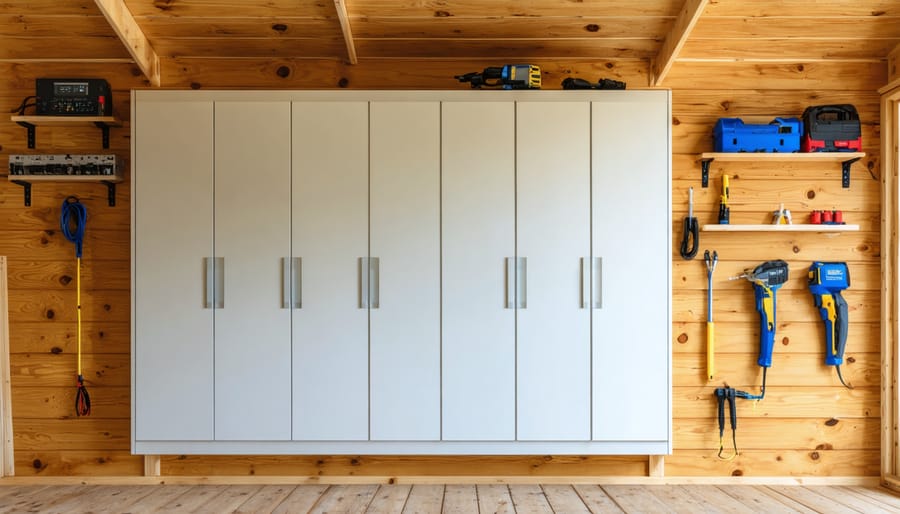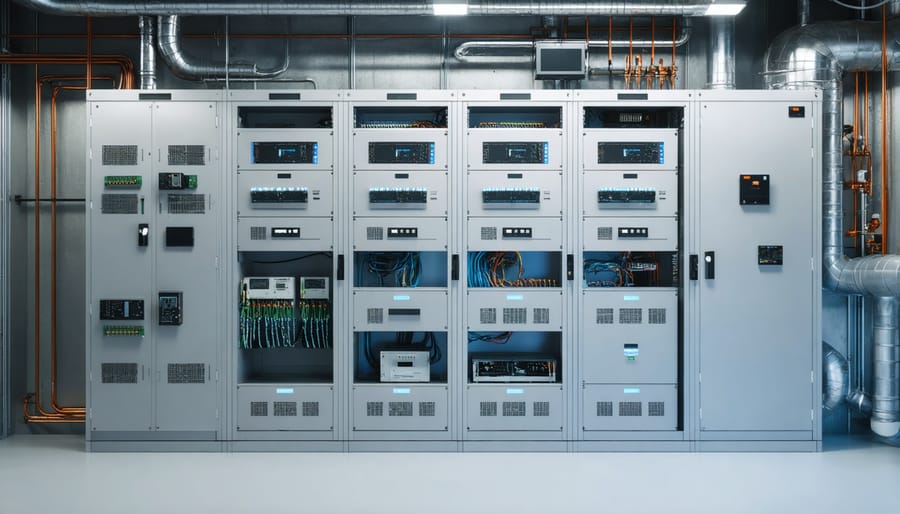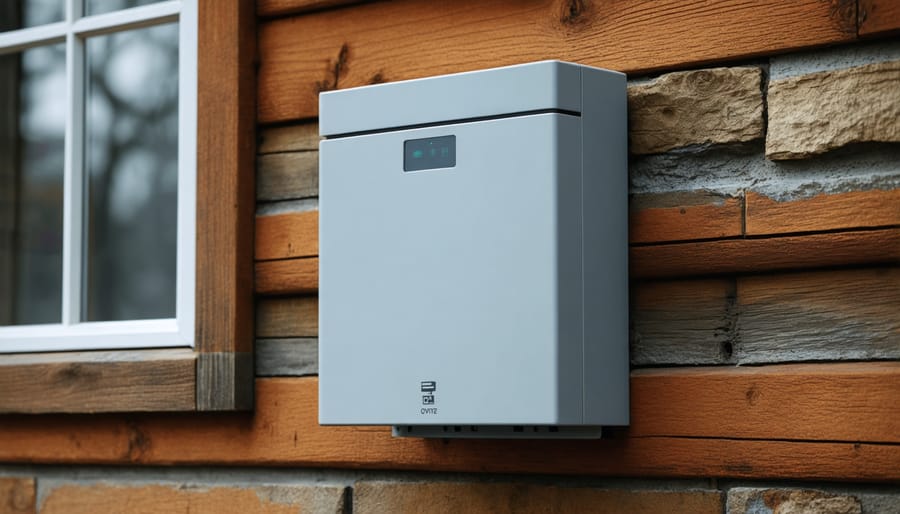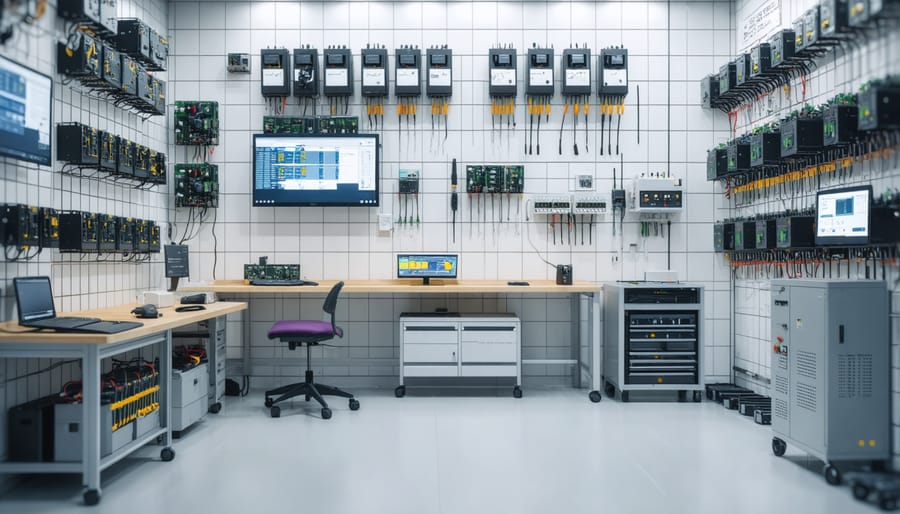Make Your Shed’s Electrical System Safe and Expandable – A Modular Solution

Transform your shed’s electrical system into a safer, more organized workspace with modular electrical enclosures. These customizable systems offer unmatched flexibility for managing power distribution while maintaining strict safety standards. Built with snap-together components and standardized mounting options, modular enclosures eliminate the chaos of loose wiring and create a professional-grade power management solution that grows with your needs. Whether you’re setting up a workshop, garden shed, or storage space, these enclosures provide essential protection against moisture, dust, and accidental contact while offering easy access for maintenance and upgrades. Their design allows for seamless integration of circuit breakers, outlets, and switches, ensuring your electrical setup remains both compliant and convenient. For DIY enthusiasts and homeowners alike, modular electrical enclosures represent the perfect balance of safety, functionality, and future-proof design.
What Is a Modular Electrical Enclosure?

Basic Components
A modular electrical enclosure consists of several essential components working together to create a safe and organized electrical system. At its core, you’ll find weather-resistant junction boxes that protect wire connections and serve as distribution points. These boxes connect to flexible or rigid conduit systems, which safely channel electrical wires throughout your shed.
Mounting plates provide a stable foundation for installing switches, outlets, and other electrical devices. These plates typically attach directly to the enclosure’s back panel, ensuring everything stays securely in place. Terminal blocks offer convenient connection points for multiple wires, while knockout holes around the enclosure allow for easy cable entry and exit points.
A properly fitted door or cover completes the system, protecting all components from dust, moisture, and accidental contact while maintaining easy access for maintenance when needed.
Safety Features
When it comes to protecting your electrical components, modular electrical enclosures come equipped with essential safety features that give you peace of mind. These enclosures are typically designed with weatherproof seals and gaskets that keep out rain, snow, and dust, ensuring your electrical connections stay dry and secure. Most models feature sturdy grounding points that help prevent electrical accidents and protect against power surges.
For added protection, many enclosures include lockable latches to prevent unauthorized access, keeping curious children and wildlife safely away from electrical components. The materials used are often fire-resistant and UV-stabilized, helping to maintain their integrity even in harsh weather conditions.
Look for enclosures with proper ventilation systems that prevent heat buildup while maintaining their weatherproof qualities. Many models also come with knock-out holes that are sealed until needed, allowing for clean cable entry points while maintaining the enclosure’s protective rating when unused.
Benefits for Your Shed’s Electrical System
Easy Expansion
One of the biggest advantages of modular electrical enclosures is their incredible flexibility when it comes to expanding your shed’s electrical setup. As your needs grow, these systems allow you to add new components without replacing the entire system. Think of it like building with blocks – you can easily snap on new sections whenever needed.
Need to add more power outlets for your new workshop tools? Simply attach additional modules to your existing setup. Planning to install outdoor lighting? The modular design makes it simple to integrate new circuits. What’s particularly convenient is that you can purchase components as your budget allows, spreading the cost over time rather than making one large investment.
The standardized design of these enclosures means you won’t struggle with compatibility issues. Most manufacturers ensure their components work seamlessly together, making future upgrades straightforward. Plus, if you’re planning to add solar panels or smart home features down the line, modular systems can easily accommodate these additions without requiring a complete overhaul of your electrical setup.
Simplified Maintenance
A modular electrical enclosure makes maintaining your shed’s electrical system a breeze. With components neatly organized in separate compartments, you can quickly identify and access specific parts without disturbing the entire system. Think of it as a well-organized toolbox where everything has its designated space.
When troubleshooting is needed, you won’t have to wade through a maze of tangled wires. The modular design allows you to isolate and work on one section at a time, making repairs and upgrades much simpler. This organized approach also means you can easily add new components or replace old ones without having to reorganize the entire system.
Regular inspections become more manageable too. You can quickly check connections, clean components, and spot potential issues before they become problems. The clear layout helps you maintain a mental map of your electrical system, making it easier to explain to electricians if professional help is needed.
Best of all, this organized approach helps protect your electrical components from dust and debris, extending their lifespan and reducing maintenance frequency.
Installation Considerations
Location Planning
Choosing the perfect location for your modular electrical enclosure is crucial for both safety and convenience. Start by selecting a spot that’s easily accessible for maintenance but away from high-traffic areas where accidental contact might occur. The ideal location should be at eye level, roughly 5 feet from the ground, making it comfortable to operate switches and check readings.
Keep your enclosure away from water sources and areas prone to moisture accumulation. If your shed has windows, avoid placing the enclosure directly beneath them to prevent water damage during rain. Consider installing the unit on an interior wall rather than an exterior one to provide additional protection from the elements.
Ensure there’s adequate clearance around the enclosure – at least 3 feet of open space in front for safe access and maintenance. If your shed houses power tools or workshop equipment, position the enclosure away from areas where dust and debris are common. This helps maintain clean connections and extends the life of your electrical components.
Think about future expansion too. Choose a location that allows for potential additions to your electrical system. Installing near the main entry point of power into your shed often makes the most sense, as it minimizes the length of wire runs and makes troubleshooting easier.
Always check local building codes before finalizing your location choice, as some regulations may specify minimum distances from certain features or requirements for outdoor installations.
Weather Protection
Keeping your modular electrical enclosure safe from the elements is crucial for maintaining a reliable and safe electrical system in your shed. The key to long-term protection lies in implementing proper protection against moisture and environmental factors.
Start by choosing enclosures with appropriate IP (Ingress Protection) ratings for your climate. Look for weatherproof gaskets and seals that create a tight barrier against rain, snow, and humidity. Quality rubber or silicone seals around cable entry points prevent water from seeping in where wires enter the enclosure.
Consider installing a drip loop in your cables before they enter the enclosure. This simple bend in the wire ensures that water runs down and away from the entry point rather than following the cable inside. Additionally, mounting your enclosure at least 12 inches above ground level helps prevent splash-back from rain and ground moisture.
For added protection, install a small awning or cover above the enclosure to deflect direct rainfall. Use weather-resistant materials for all external components, including corrosion-resistant mounting hardware and UV-stabilized plastic or powder-coated metal enclosures that won’t degrade in sunlight.
Regular maintenance checks are essential. Inspect seals and gaskets twice yearly, especially before wet seasons, and replace any showing signs of wear or damage. This proactive approach ensures your electrical components stay dry and functional year-round.


Common Applications
Modular electrical enclosures find their way into numerous practical applications in shed setups, making them invaluable for various activities and purposes. In workshop sheds, these enclosures safely house power distribution systems for tools and equipment, while providing easy access for maintenance and upgrades. Many DIY enthusiasts use them to create organized charging stations for battery-powered tools, complete with dedicated outlets and surge protection.
Garden sheds benefit from modular systems that support automated irrigation controls and grow light setups. These enclosures protect sensitive electronics from moisture while maintaining proper ventilation. For hobby sheds, modular enclosures accommodate power needs for specialized equipment like 3D printers or small kilns, with the flexibility to add circuits as your interests expand.
Home office sheds are another popular application, where modular enclosures house networking equipment, UPS systems, and standard power distribution. The modular design allows for neat cable management and future expansion as technology needs change. Storage sheds often utilize these systems for security lighting, motion sensors, and climate control equipment.
Many homeowners install modular enclosures in multipurpose sheds, creating zones for different activities. For example, one section might power workshop tools, while another supports entertainment systems for a recreational area. The modular approach allows for clear separation of circuits and easy troubleshooting when needed.
Whether you’re setting up a basic power system or planning a complex workshop, modular electrical enclosures adapt to your needs while maintaining safety and organization. Their versatility makes them ideal for both simple and sophisticated shed electrical setups.
Modular electrical enclosures represent a smart investment in both safety and functionality for your shed or outdoor workspace. By choosing the right enclosure system, you’re not just organizing your electrical components – you’re creating a safer, more efficient environment that can adapt to your changing needs. Remember to always prioritize safety by ensuring proper installation, regular maintenance, and compliance with local electrical codes.
Whether you’re a DIY enthusiast or working with a professional, take time to plan your electrical layout carefully and select high-quality components that match your specific requirements. Keep in mind that while initial costs might be higher for quality modular systems, the long-term benefits of flexibility, safety, and peace of mind are well worth the investment.
As you move forward with your electrical enclosure project, maintain detailed documentation of your setup and schedule regular inspections to ensure everything continues to function safely. By following these guidelines and best practices, you’ll create a reliable electrical system that serves your needs while protecting your valuable equipment and, most importantly, the safety of you and your family.

